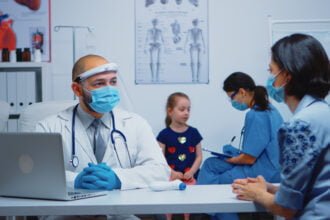The Daily Mail reports that Mercedes Curnow, a 23-year-old Englishwoman, has died of cervical cancer. Since 2003, the National Health Service has denied routine Pap tests to women under 25. Her grieving mother believes that an earlier Pap test would have saved her daughter’s life, and has started the Mercedes Curnow Foundation for the Detection of Cervical Cancer. Its goal is to bring back routine Pap testing for women at age 20.
The Daily Mail reports that Mercedes Curnow, a 23-year-old Englishwoman, has died of cervical cancer. Since 2003, the National Health Service has denied routine Pap tests to women under 25. Her grieving mother believes that an earlier Pap test would have saved her daughter’s life, and has started the Mercedes Curnow Foundation for the Detection of Cervical Cancer. Its goal is to bring back routine Pap testing for women at age 20.
In defense of the NHS clinical guideline, a Department of Health “spokesperson” explained that “an expert committee found that screening in women aged under 25 does more harm than benefit…Cervical cancer and mortality from it are very rare in women under 25. Since the starting age was raised in England in 2003 there has been no increase in mortality in women aged 20 to 24 or 25 to 30 years old.”
Claims about harm and benefit depend upon how those harms and benefits are distributed. Most routine screening increases health care expenditures. When individuals spend their own money on a test, they decide whether the tradeoff of less money for other uses is worth buying a test that reduces their personal risk.
To officials steeped in public health techniques emphasizing population health over individual medicine, individuals may carry less weight than budgets and population averages. Reducing screening reduces expenditure, and the harm from a rare death does not make its way into budgetary calculations. Implicitly assuming that ignorance is bliss, arguments for reducing screening often focus on the harm done by excessive treatment for minor abnormalities. They do this despite the fact that individuals making an informed decision about their future care always have the option to do nothing. They also discuss the “cost” of the mental distress caused by a false positive test, generally without weighing this mental distress against the mental distress caused by a cancer death that might have been prevented by early screening.
Official statistics report that the incidence of cervical cancer fell in England between 1998 and 2008 in all age groups except those aged 20 to 29. In 2008, there 39 were cases in the 20-24 age group and 281 cases in those aged 25-29. Since 2003, cervical incidence may have risen for those aged 25-34. It is clear, however, that cervical cancer mortality rates rose between 1998 and 2008 for the 25-29-year-old age group.
The U.S. Preventive Services Task Force says that survival rates for cervical cancer depend heavily on early detection. Infection with high-risk strains of HPV, generally acquired sexually, is “the most important risk factor for cervical cancer.” Sexual activity with multiple partners, and intercourse at an early age, are also important risk factors.
To people exercising judgment, this might suggest that guidelines in touch with reality should encourage young women who start having intercourse at an early age to start Pap tests at an early age, especially since progression from cellular abnormalities to cancer between screening intervals is a bigger risk for women under 45. According to the U.S. Preventive Services Task Force, when annual Pap tests are recommended, “progression is rare; with 3-year intervals, this may happen in up to 50% of diagnosed cases.”
The good news is that U.S. Pap test guidelines prior to 2009 did encourage people to exercise judgment by recommending that women have their first Pap test 3 years after they began having sexual intercourse. This changed in November, 2009, when the American College of Obstetricians and Gynecologists (ACOG) released new guidelines. Despite data suggesting that U.S. women have become sexually active at younger ages since 1980, it recommended that women have their first Pap test at age 21. Adolescents, it tells us, have a very low risk of cervical cancer.
It is important to understand that although groups in favor of binding clinical guidelines like to talk about evidence-based recommendations, the evidence that they base their recommendations on may be weak or nonexistent. In 2005, the Ontario Program in Evidence-based Care concluded that although five of the clinical practice guidelines it studied made “recommendations regarding the age of initiation of screening (recommendations varied between 20 and 25 years)… there were no comparative or non-comparative studies identified that addressed the initiation of screening.”
In the absence of data, one might expect that expert opinion would, like the pre-2009 guidelines, stress the importance of individual risk factors. Unfortunately, as the influence of the public approach to medicine grows, this approach seems to have fallen out of favor.
Assuming that you were paying for the test, what Pap test guidelines would you recommend for your teenage or twenty-something daughter?





